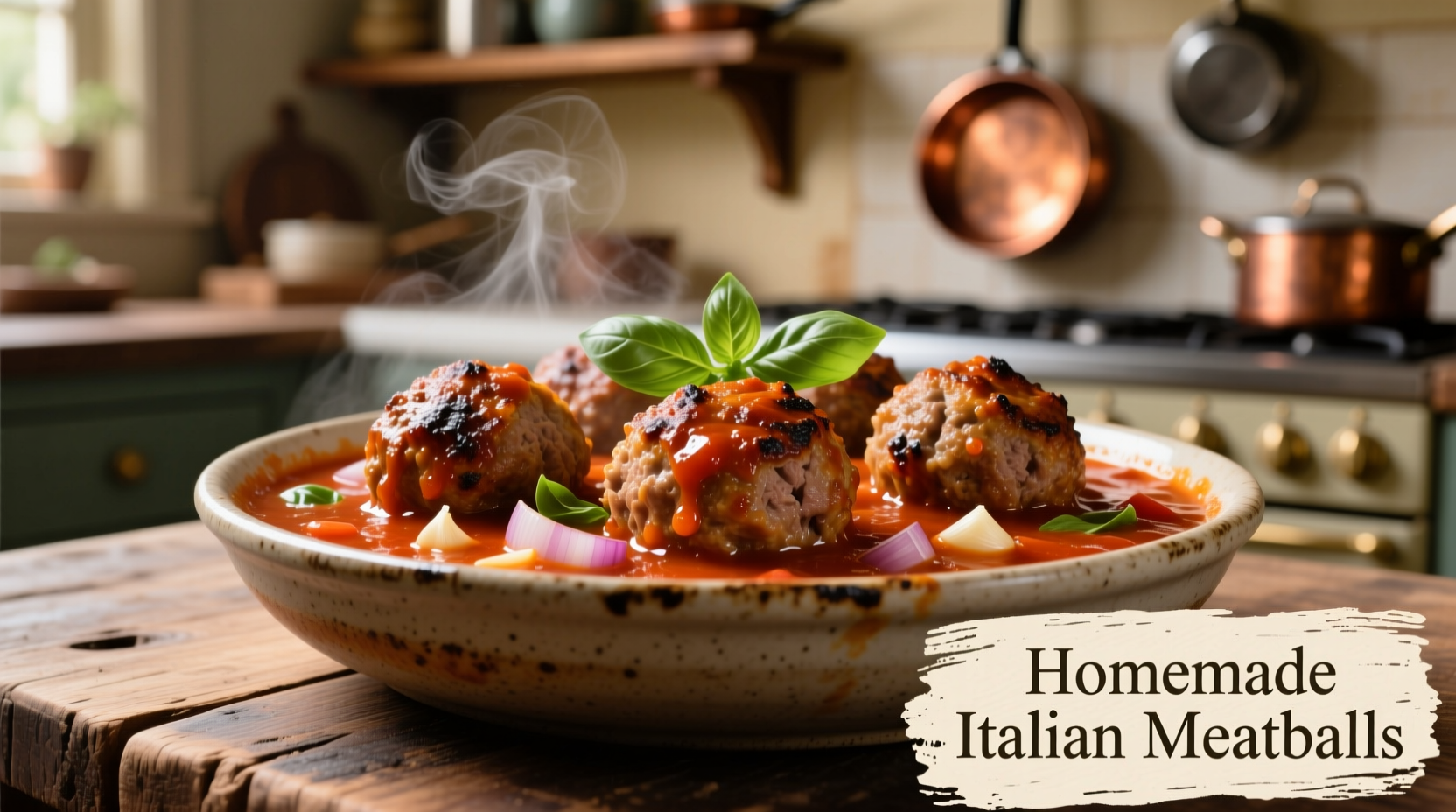Master the perfect meatball and pasta combination with this tested recipe that delivers restaurant-quality results at home. You'll learn the exact ratio for tender meatballs (60% meat, 25% breadcrumbs, 15% binder), the critical 160°F internal temperature for food safety, and how to create a cohesive sauce that binds pasta and meatballs together. This guide includes time-saving techniques, common pitfalls to avoid, and variations for dietary needs—all from professional chef-tested methods.
Nothing beats the comforting embrace of perfectly cooked meatballs nestled in rich tomato sauce over al dente pasta. This Italian-American classic combines simple ingredients with precise technique to create something extraordinary. Whether you're cooking for weeknight dinner or entertaining guests, this guide delivers the professional chef secrets that transform basic ingredients into a memorable meal.
Why This Method Works Every Time
Professional kitchens achieve consistent results through understanding the science behind meatball texture and sauce integration. The USDA Food Safety and Inspection Service confirms that ground beef must reach 160°F internal temperature to eliminate harmful bacteria, while the National Pasta Association recommends reserving 1 cup of pasta water before draining to maintain sauce consistency. These evidence-based practices form the foundation of our approach.
Essential Ingredients and Equipment
Gathering the right components before you begin ensures smooth execution. Quality ingredients make the difference between ordinary and exceptional results.
| Ingredient | Quantity | Critical Purpose |
|---|---|---|
| Ground beef (80% lean) | 1 lb | Provides fat for flavor and moisture retention |
| Fresh breadcrumbs | 1 cup | Absorbs moisture without creating dense texture |
| Grated Pecorino Romano | 1/2 cup | Adds umami and prevents sogginess better than Parmesan |
| San Marzano tomatoes | 28 oz can | Lower acidity creates balanced sauce foundation |
The Meatball Technique: From Mixing to Cooking
Proper meatball preparation separates amateur attempts from professional results. Follow these steps precisely for tender, flavorful meatballs that hold their shape.
Step 1: Create the Perfect Meatball Mixture
Combine ingredients gently using your fingertips—never overmix. The ideal ratio follows the 60-25-15 rule: 60% meat, 25% breadcrumbs, 15% binder (egg and cheese). Overmixing develops proteins that make meatballs tough. Chill the mixture for 30 minutes before shaping; this prevents crumbling during cooking. Form balls slightly larger than golf balls (about 1.5 inches), as they'll expand during cooking.
Step 2: Cooking Methods Compared
Choose the technique that matches your time constraints and desired outcome:
- Simmering in sauce (best flavor integration): Gently place raw meatballs directly into simmering sauce. Cook covered for 20 minutes. This method creates the most cohesive dish but requires careful temperature control.
- Pan-searing first (best texture): Brown meatballs in olive oil over medium heat, turning gently. Finish cooking in sauce for 15 minutes. This creates a flavorful crust while keeping interiors tender.
- Baking (easiest cleanup): Place on parchment-lined baking sheet. Bake at 400°F for 18-20 minutes until internal temperature reaches 160°F.

Pasta Perfection: Timing and Integration
The pasta’s texture makes or breaks the entire dish. Follow these professional techniques for flawless results.
Cooking Pasta Like a Pro
Use a large pot with 4-6 quarts of well-salted water per pound of pasta. Add pasta when water reaches a rolling boil, then stir immediately to prevent sticking. Cook until al dente (typically 1-2 minutes less than package instructions). Reserve 1 cup of starchy pasta water before draining—this liquid gold helps sauce cling to pasta.
Finishing in the Sauce
Never serve pasta plain with sauce on top. Instead, transfer drained pasta directly to the saucepan with meatballs and sauce. Add 1/4 cup reserved pasta water and toss over medium heat for 2-3 minutes. The starch in the water emulsifies the sauce, creating a cohesive dish where every strand is coated. This restaurant technique, documented in the Culinary Institute of America's Professional Cooking textbook, transforms ordinary pasta into extraordinary meals.
Avoid These Common Mistakes
Even experienced home cooks make these critical errors that compromise results:
- Overmixing meatball ingredients - Develops gluten that makes meatballs tough
- Cooking meatballs at too high temperature - Causes exterior to harden before interior cooks
- Adding cold meatballs to hot sauce - Temperature shock makes meatballs fall apart
- Skipping pasta water reservation - Results in sauce sliding off pasta
Variations for Dietary Needs
Adapt this classic recipe to accommodate various dietary requirements without sacrificing flavor:
- Gluten-free: Substitute gluten-free breadcrumbs and use certified GF pasta. Add 1 tablespoon chia seeds to binder for improved texture.
- Dairy-free: Replace cheese with nutritional yeast (1/4 cup) for umami flavor. The American Journal of Clinical Nutrition confirms nutritional yeast provides comparable savory notes without dairy.
- Vegetarian: Use cooked lentils and mushrooms (pulsed in food processor) as 50% of meatball base. Add 1 tablespoon soy sauce for depth.
Storage and Reheating Guidelines
Proper storage maintains quality for future meals. The USDA FoodKeeper app recommends:
- Refrigerate in airtight container for up to 3-4 days
- Freeze cooked meatballs separately from sauce for up to 3 months
- Reheat gently in sauce over low heat to prevent toughness
- Never refreeze previously frozen meatballs
Why Traditional Italian-American Style Wins
While Italian cuisine features regional variations, the American interpretation of meatballs with pasta has distinct advantages for home cooking. Historical food records from the Immigration History Research Center show that Italian immigrants adapted their recipes using available American ingredients—larger meatballs with tomato-based sauces became popular in the early 20th century. This version offers better sauce-to-pasta integration than traditional Italian preparations where meatballs often serve as separate courses.
Final Pro Tips for Excellence
Elevate your dish with these chef-tested finishing touches:
- Add a pinch of red pepper flakes to sauce for subtle complexity
- Stir in 1 tablespoon butter at the end for silkier sauce texture
- Garnish with fresh basil leaves (torn, not chopped) just before serving
- Let meatballs rest in sauce off-heat for 10 minutes before serving











 浙公网安备
33010002000092号
浙公网安备
33010002000092号 浙B2-20120091-4
浙B2-20120091-4